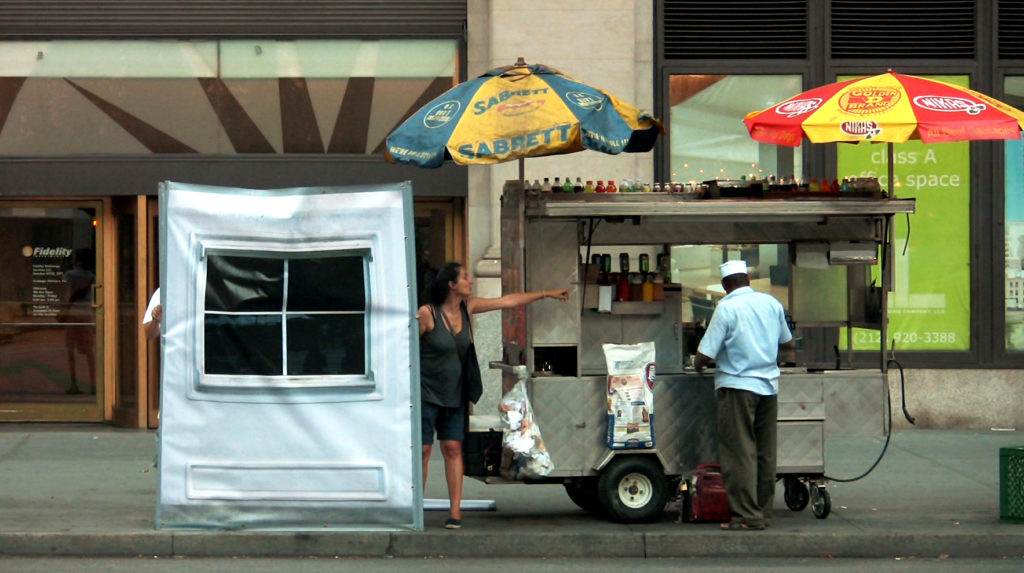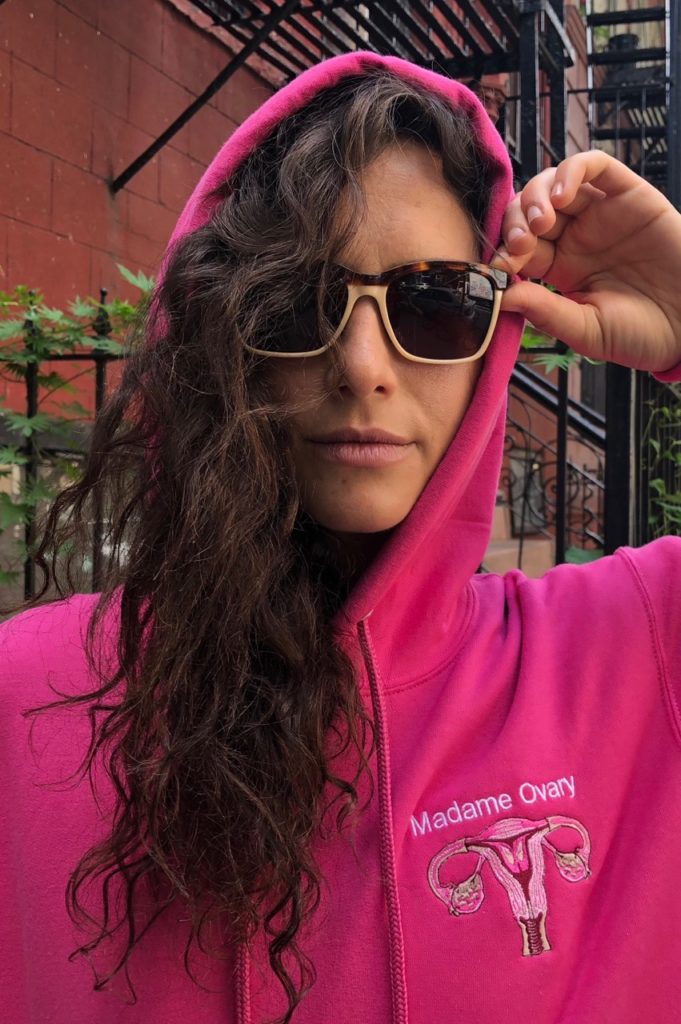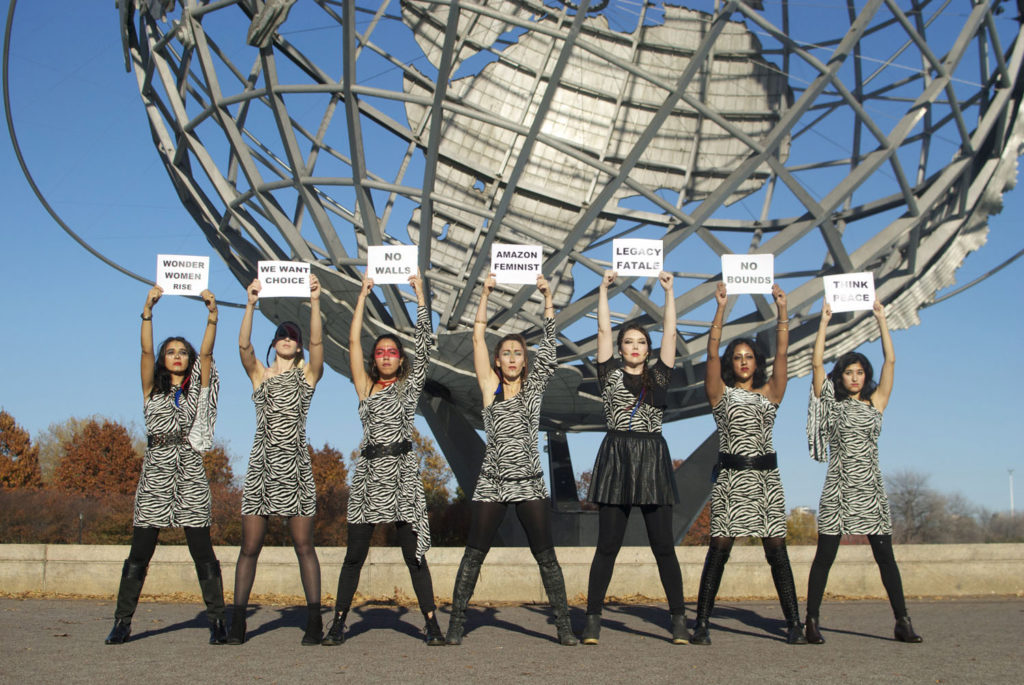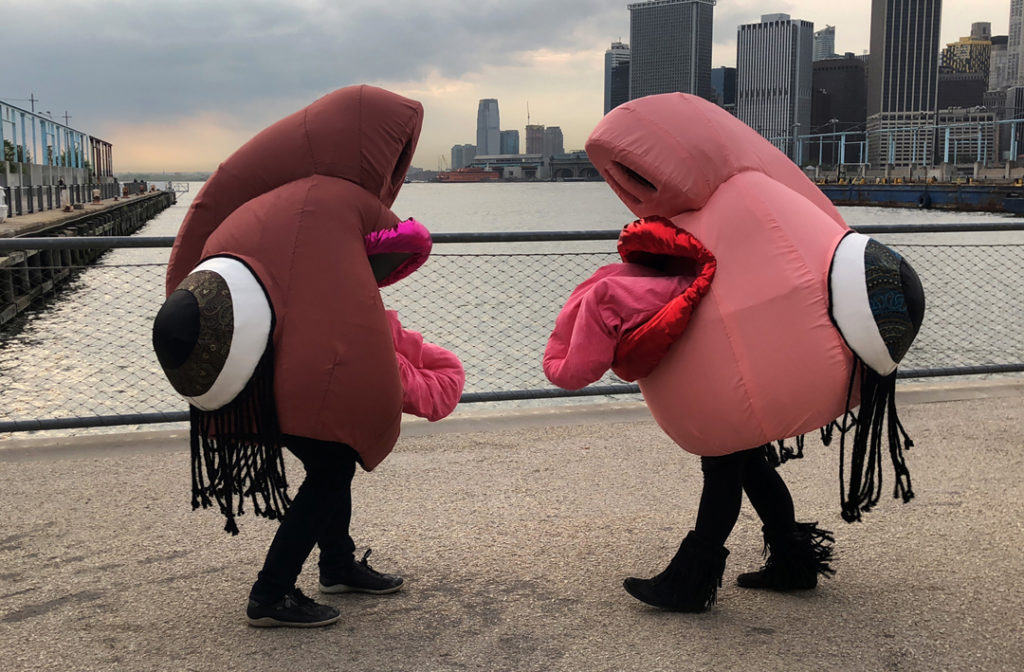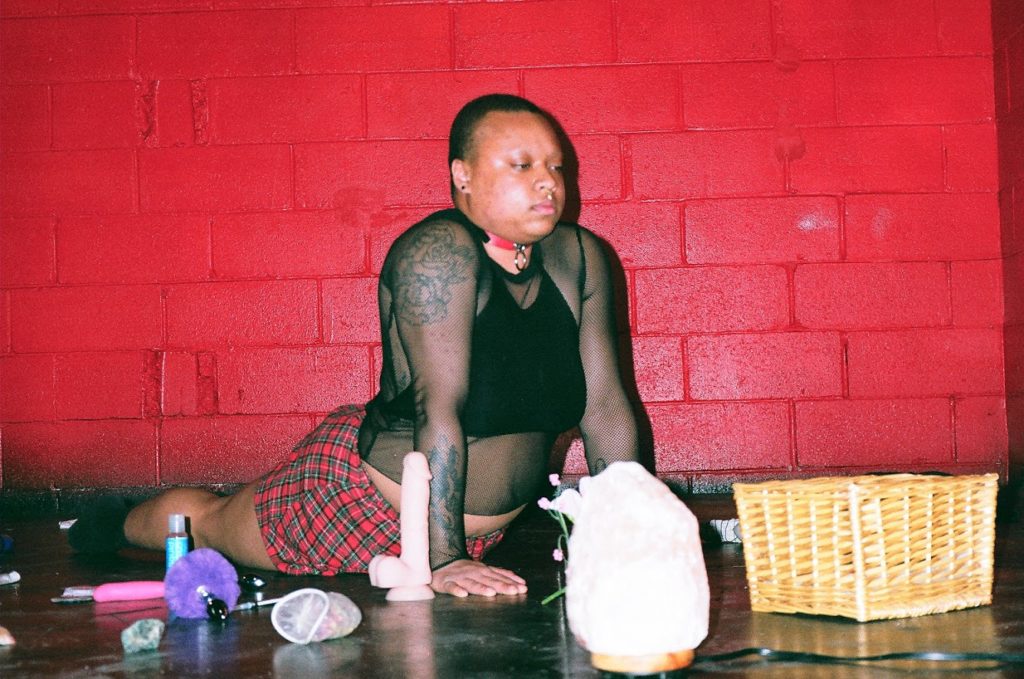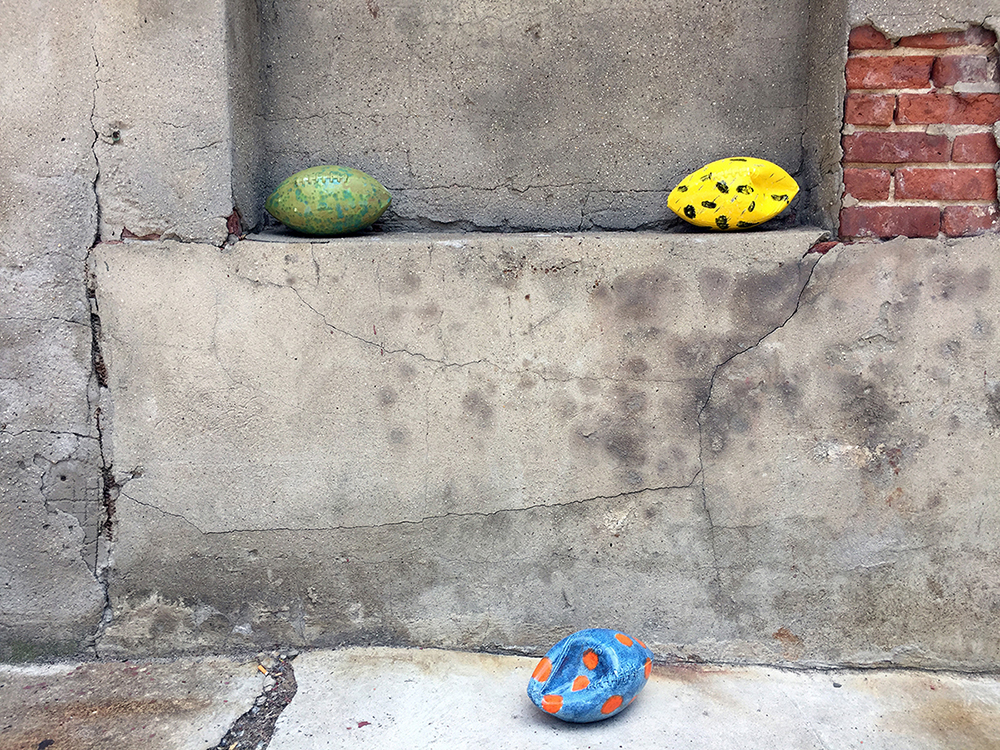Each week we feature artists from Art in Odd Places 2018: BODY NYC

Autumn Robinson & Lyra Monteiro (The Museum On Site), Washington’s Next!, 2018. Image Credit: Autumn Robinson
Autumn Robinson & Lyra Monteiro (The Museum On Site)
1. Tell us about yourself and your project for AiOP BODY 2018:
Autumn Robinson & Lyra Monteiro (Director of The Museum On Site) are multidisciplinary artists who met as Create Change Fellows with the Laundromat Project. Our project is an expression of our shared interest in racialized bodies in public space, and our backgrounds in history, public performance, media, & political/protest art.
Washington’s Next! responds to President Trump’s tweets following the violence in Charlottesville, one of which read, in part, “Robert E Lee, Stonewall Jackson – who’s next, Washington, Jefferson? So foolish!” Our performance on October 13 will recast George Washington, the seemingly untouchable hero of the Revolution, as the owner of six plantations, and the enslaver of hundreds of people of African descent. This performance will complement our contribution to the group exhibition, a video called The Price of Freedom, which will explore the lineage of slavery in the U.S. and the realities of Black emancipation.
2. What does the theme BODY mean to you?
It allows us to honor those whose bodies have been & continue to be fodder for capitalism, police violence, and white supremacist agendas, even as they are erased from our commemorative landscapes; and to make visible the centrality of these corporeal exploitations to the very foundations of the USA.

Dominique Duroseau, Rap on Race with Rice, (2015- ). Photo Credit: Jason Colbert
Dominique Duroseau
1. Tell us about yourself and your project for AiOP BODY 2018:
I’m an interdisciplinary artist whose works investigate social issues.
Rap on Race with Rice is a participatory performance of discourse about issues on race and racism, while performing the action of separating rice. The performance is inspired by the famous 7.5-hour conversation between James Baldwin (writer & social critic) and Margaret Mead (anthropologist), entitled A Rap on Race, in 1970. The idea behind this performance is to get people to open up and discuss continuing issues of race and racism today, through the repetitive action of separating black and white rice grains.
2. What does the theme BODY mean to you?
The theme Body is heavily present in my works politically, addressed as: BLACK BODIES, BLACK PRESENCE. As a Black Person/Black Woman…my (and other’s) presence alone can be seen as a threat and we can easily become victims. I love to use it as a political weapon to challenge ridiculous fears.
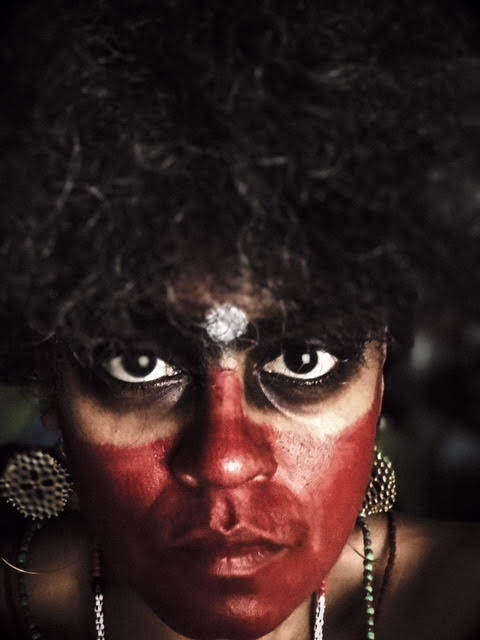
Clarivel Ruiz, Synophrys: And Other Hairy Little Things, 2018. Photo credit: Clarivel Ruiz
Clarivel Ruiz
1. Tell us about yourself and your project for AiOP BODY 2018:
We, daughter of Kiskeya Ayiti Bohio (aka Hispaniola aka Dominican Republic and Haiti), raised in New York City on the ancestral bones and covered shrines of the Lenape people. Our artist practice delves into understanding the historical myths created to oppress people of color in-order to heal wounds created by these racial divides. In 2016 we initiated a project called Dominicans Love Haitians Movement bringing together Dominican and Haitians to celebrate our commonalities. We are part of Culture Push’s Utopian Fellowship. A 2017 cohort of Hemispheric Institute’s EmergeNYC art activist program. Participate in 2016 Black Women Artists for Black Lives Matters performance group for Simon Lee’s gallery exhibit at the New Museum and in 2017, Brooklyn Museum’s closing event We Wanted A Revolution. In 2018, we are part of Betty’s Daughter Arts Collaborative as Associate Artist and Art In Odd Places, Body! exhibit discussing how body hair has impacted women’s consciousness.
2. What does the theme BODY mean to you?
Body to me is the raising of our consciousness and joy, where does it exist inside of my body? It is considering how we have stepped away from the erotic and the tantric to pacify and oblige the White male gaze while subverting our own desires to exist freely and unconstrained.
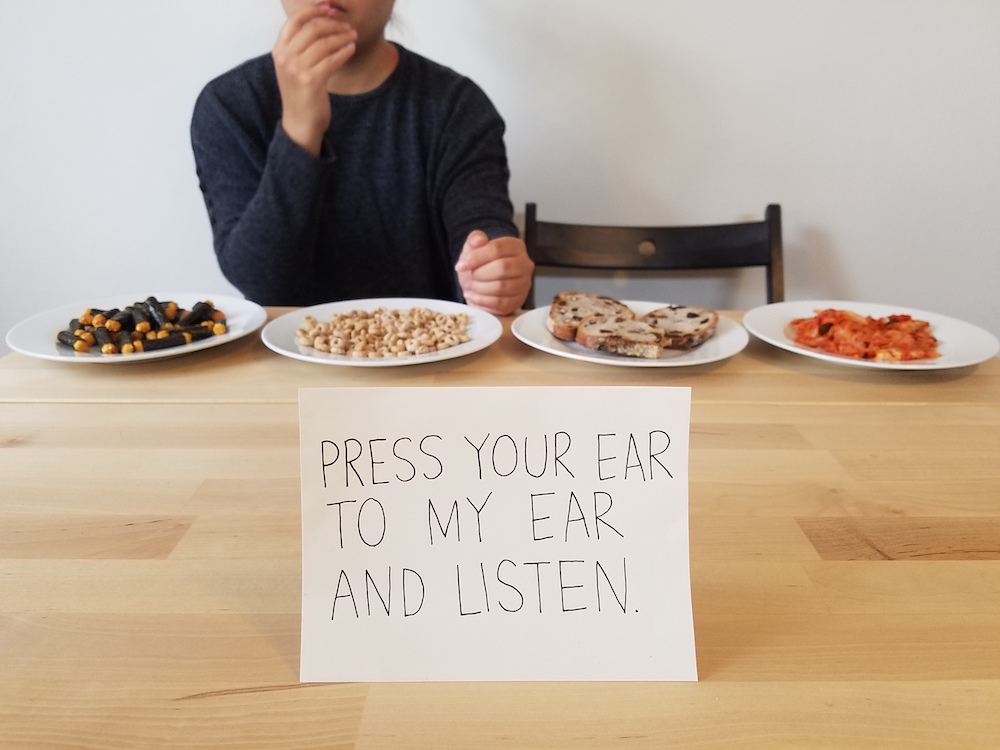
Jaime Sunwoo, Ear to Ear, 2018. Photo courtesy of the artist
Jaime Sunwoo
1. Tell us about yourself and your project for AiOP BODY 2018:
I am a Korean-American multidisciplinary artist from Brooklyn, New York. I combine video, audio, sculpture, and storytelling to create sensory performances in galleries, theaters, and public spaces. I often examine food as a way to discuss identity, history, and death. I’m currently working on Specially Processed American Me, a performance and food history workshop series on SPAM in the Asia-Pacific, its influence in World War II, and its place in the Asian American narrative.
For AiOP, I welcome you to join me for Ear to Ear, where we will listen to each other’s inner sounds by pressing our ears together. We’ll take turns eating different textured foods– granola, mochi, and pop rocks– to experience these textures aurally and orally. I’ve found the experience to be simultaneously playful, deeply intimate, and somewhat grotesque. It feels like you’re hearing through another person’s perspective– empathy through listening.
2. What does the theme BODY mean to you?
We show trust and intimacy through the body so with strangers, we guard our senses. We avoid eye contact, are quieter, and certainly do not touch. We need to in order to protect ourselves. Ear to Ear is a celebratory act to share the senses with someone you are willing to trust just for a moment.

Nicole Goodwin, Ain’t I a Woman (?/!), 2017. Photo Credit: Victor Bautista
Nicole Goodwin
1. Tell us about yourself and your project for AiOP BODY 2018:
I am a writer, poet, and performance artist and I am a resident of East Harlem for almost 15 years. My project Ain’t I a Woman (?/!): Kingston Legacy was born out of my ongoing project Ain’t I a Woman (?/!) which came to fruition under the supervision of Ed Woodham and George Emilio Sanchez from The Hemispheric Institute’s EmergeNYC Fellowship cohort for 2017. I developed the project in order to highlight the concept of how our society objectifies the bodies of African-American women, especially those that do not meet the optimal standards of beauty. My work is in conversation with the legendary Sojourner Truth prolific 1851 speech entitled Ain’t I a Woman.
2. What does the theme BODY mean to you?
For me the theme “BODY” incorporates dialogue. So much opposition is set against Black and Brown bodies of color, that do not fit into the mainstream norms of Western beauty standards. My body is subjected to alienation daily. I want my work to give rise to presence outside of these biases.

Maryam Monalisa Gharavi, Mutual Recognition System (Concerning Max Factor), 2018. Photo Credit: Diane Nguyen
Maryam Monalisa Gharavi
1. Tell us about yourself and your project for AiOP BODY 2018:
In the 1930s, Max Factor, Jr., heir to the cosmetic empire, experimented with a new lipstick invention called Tru-Colors. He hired female workers at his New York manufacturing plant to test the indelibility of his new reds through repetitive mouth-to-mouth kissing. When the workers went on mass strike and walked off the job, Factor created a “kissing machine” to automate his experiments. My project enacts this historical paradox.
Writer Clara Lou wrote about my project: “The work of caring is never done; the feminized subjects who often perform this work find themselves doing it over and over. We encountered the intersection of waged work and caring labor, twinned history tearing at what is to come.” The work of caring, especially as it is positioned between the rise of new beauty norms, industrial corporate management, and the agency of women, is what I set out to discover.
2. What does the theme BODY mean to you?
In contemporary society, the body’s main public relationship is one of security, which I derive from the Latin “sine cura” or “without care.” In the era of broadly defined self-care, we would do well to focus on the cultural conditioning of the body—how others “care” about our bodies.

TANGA, Modular Float, 2018. Photo Credit: Alfredo Travieso
TANGA!: Rachel Chick, Andrew Prieto, Alfredo Travieso
1. Tell us about yourself and your project for AiOP BODY 2018:
As a trans-disciplinary collaborative, we work not across disciplines but through them. Each participant who interacts, even bystanders or passers by, are becoming part of the body of each event. As such, the body actualizes a site for transforming, mutating, and changing where ideas go viral and stability is called into question. This can be social, political, simply aesthetic or eventually spiritual.
2. What does the theme BODY mean to you?
Who’s body, what body?
Everybody
A body of water, a body of land
Auto body
You’re nobody ’till somebody loves you
All bodies are incapable of fragmentation though the term suggests otherwise
The body is the opposite of freedom
Young body, old body, eternal, reproducible.

Dakota Gearhart, Untangling Myself From The Mess Culture Has Made, 2018
Dakota Gearhart
1. Tell us about yourself and your project for AiOP BODY 2018:
I make performance, video, sculpture, collage, & multimedia installations. I use found materials I collect at places like microbiology labs, spam folders, and industrial dumps. Reorganized according to science-fiction & anti-commercial aesthetics, these materials function to depict what the collapse of a (patriarchal and binary) human-centric world view might look like. With this intention, I bundle together my interests in perception, biology, queerness, the role of care and intimacy, humor, and the importance of world-building to articulate more creative & less oppressive futures.
My AiOP project is titled: Untangling Myself From The Mess Culture Has Made. It’s a performance in which I wear 100 intestinal-like cords made from electrical wire and confetti. In this work, my body is my own. It exists for me “to tangle and untangle” with whatever & whoever I want. Through this lens, my body is beautiful, because it’s mine; even if it’s loose, primordial, messy, soft, hard, & coming apart.
2. What does the theme BODY mean to you?
-how my body as a woman is hardly ever my own…it’s always warped by someone else’s desires (sex), biological needs (babies), money (advertising), politics (abortion)-
-how the body starts to come apart at a certain atmospheric pressure-
-how I want agency for my body; let it take up space—————————-


